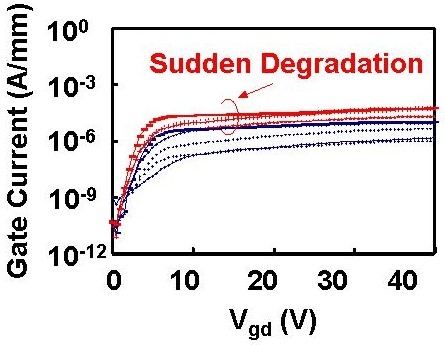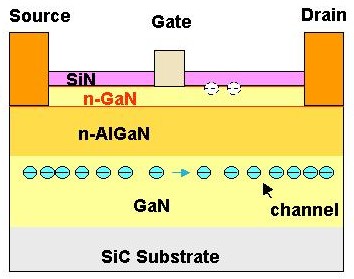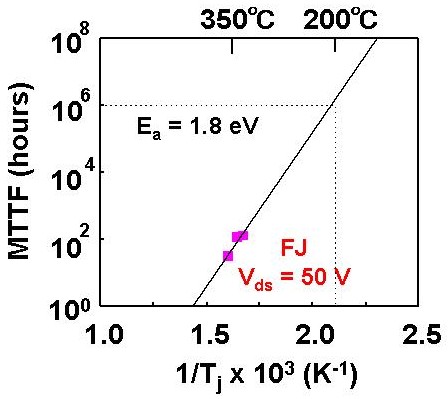Archived content
NOTE: this is an archived page and the content is likely to be out of date.
Fujitsu Develops Technology for High-Reliability Gallium Nitride HEMT
-Achieves world's longest lifespan of high-temperature operation at 200°C for over 100 years-
Fujitsu Laboratories Ltd.
-
[1] Gallium nitride (GaN)
A wide band gap semiconductor that features an advantage in that it features strong resistance to voltage breakdown, compared to conventional semiconductor materials such as silicon (Si) or gallium arsenide (GaAs).
-
[2] High electron-mobility transistor (HEMT)
A type of field-effect transistor that utilizes the characteristic that, electrons located in the junction of two different bandgap materials move at higher speeds compared to electrons located in ordinary doped semiconductors. Fujitsu pioneered these transistors by developing the world's first HEMT in 1980. Currently, HEMTs are used in a wide range of infrastructure technologies such as satellite broadcasting receivers, mobile phones, global positioning system (GPS) navigation systems, and broadband wireless access systems.
-
[3] WiMAX
Worldwide Interoperability for Microwave Access, a collective term for wireless interface devices - embedded in notebook PCs or handheld terminals - that meet the standards IEEE802.16 and IEEE802.16e for wireless interfaces. The WiMAX Forum certifies WiMAX-related hardware and networks.
About Fujitsu Laboratories
Founded in 1968 as a wholly owned subsidiary of Fujitsu Limited, Fujitsu Laboratories Limited is one of the premier research centers in the world. With a global network of laboratories in Japan, China, the United States and Europe, the organization conducts a wide range of basic and applied research in the areas of Multimedia, Personal Systems, Networks, Peripherals, Advanced Materials and Electronic Devices. For more information, please see:http://jp.fujitsu.com/group/labs/en/
Technical Contacts
Advanced Devices Lab.Device and Materials Lab.
![]() Phone: +81-46-250-8229
Phone: +81-46-250-8229
![]() E-mail: gan-hemt@ml.labs.fujitsu.com
E-mail: gan-hemt@ml.labs.fujitsu.com
Company:Fujitsu Laboratories Limited
Date: 22 June, 2007
City: Kawasaki, Japan
Company:
Fujitsu Laboratories Ltd.,
,
,
,
,


